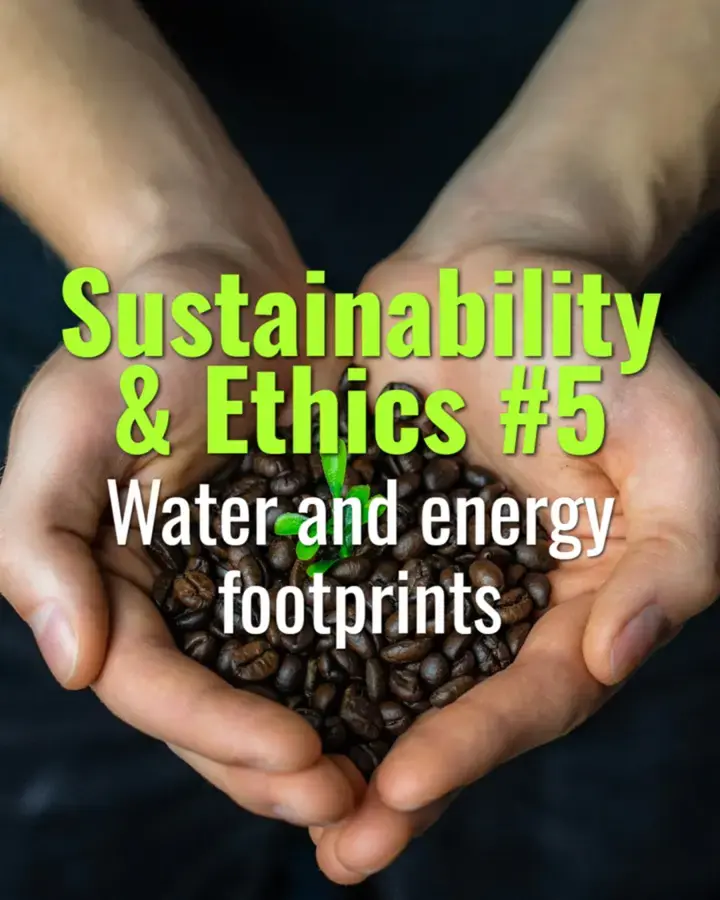Water and energy footprints
The water and energy demands across the coffee supply chain, how they are measured, and strategies to reduce their environmental footprint.
- Coffee Basics Nerds
- 2 min read
Article 5 of 12 in Sustainability & Ethics/

Water Footprint
- Definition: Total volume of freshwater used directly and indirectly in coffee production.
- Key Stages:
- On-farm irrigation (in some regions).
- Processing, especially washed (wet) methods, which can use 10–40 liters per cup of coffee.
- Brewing, where consumers also contribute to the water footprint.
- Blue, Green, Grey Water:
- Blue = irrigation water.
- Green = rainfall stored in soil.
- Grey = water required to dilute pollutants.
Energy Footprint
- Farm Level: Fertilizer production, machinery, and transport contribute to energy use.
- Processing: Mechanical dryers consume large amounts of fuel or electricity.
- Roasting: High-heat roasting equipment requires significant energy.
- Cafés & Consumption: Espresso machines, grinders, milk steaming, and hot water kettles add to footprint.
Strategies to Reduce Footprints
- Water Efficiency:
- Eco-pulpers and water recycling in washed processing.
- Wastewater treatment before discharge.
- Energy Efficiency:
- Solar dryers to reduce fuel use.
- Modern roasters with heat recirculation and better insulation.
- Cafés using energy-efficient espresso machines and smart power management.
Measuring & Benchmarking
- Tools like Water Footprint Network and Life Cycle Assessment (LCA) quantify impacts.
- Growing demand for carbon and water footprint labeling in specialty coffee.
Consumer Role
- Brewing method matters: single-serve pods, espresso, or drip brewing vary in water and energy demand.
- Awareness campaigns encourage efficient use and equipment choices.
Summary
Coffee has a significant water and energy footprint, especially in wet processing, roasting, and brewing. Sustainable practices—such as eco-pulpers, solar drying, efficient roasters, and café energy management—can reduce impacts across the chain.